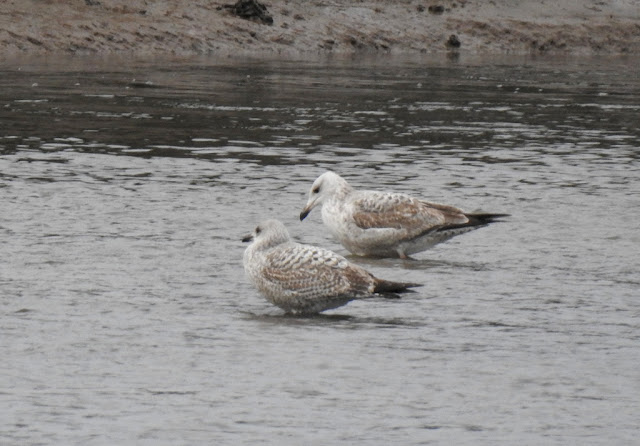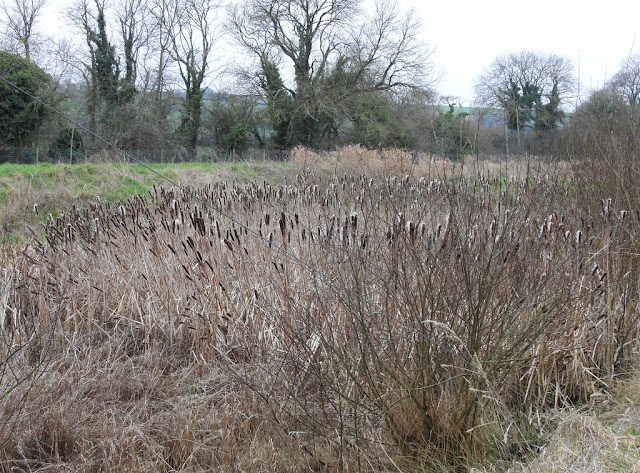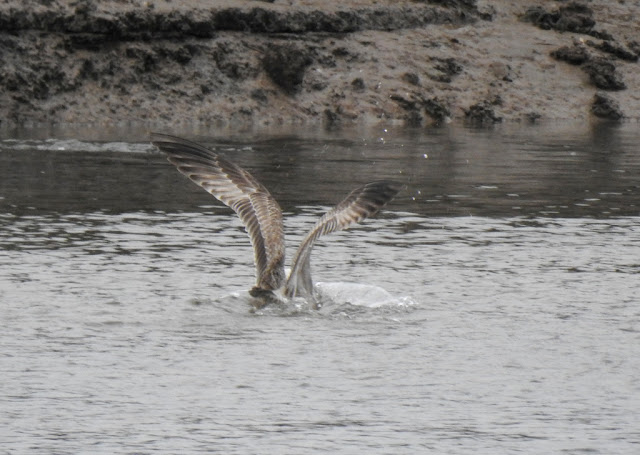Still a bit fragile, so didn't feel like going outdoors until late afternoon today, and fancied somewhere very quiet. How about Puncknowle WRC? A tiny, tucked-away sewage works, quite close to home. I've tried it a few times in the past, but not done better than a half-dozen or so Chiffs. Two winters ago I seemed to find Sibe Chiffs almost anywhere I tried, but Puncknowle WRC held out on me. Last winter was harder and I struggled for Sibes everywhere, with just one I think, at Kilmington. This year ditto, with a brief 'probable' at Kilmington the sum total.
Viewing at Puncknowle is tricky, but eventually I found some Chiffs visiting a nice, mossy filter bed, and clambered through the wooded surround to a reasonable spot by the perimeter fence. I could see maybe half the filter bed, and settled down to enjoy the Chiffy comings and goings. It was very therapeutic to watch the Chiffs, as well as Blackbirds, a Song Thrush, Dunnocks, Pied and Grey Wagtails poke about in the coarse gravel and dodge a soaking from the slowly-rotating sprinkler arms. Two or three times I had brief views of what looked a suspiciously pale Chiff, but on each occasion it flicked out of sight before I could properly take it in. Finally...
 |
| Not the best photos, but that's it at the back, with standard collybita Chiffs front and right. It looks pretty good for Sibe Chiff to my eye, and certainly did in the field. |
Very pleased I made the effort. There were 8+ Chiffs in total, which is more than I've previously counted at Puncknowle. Definitely worth another visit I think.
I've not gone crazy with work this last week, but was pretty knackered by close of play yesterday. Still, I couldn't go home without giving the Axe Estuary a cursory look. When sifting the big gulls, basically I am looking for white-headed youngsters - Caspian Gull candidates. Very quickly I came across this interesting beast...
 |
| It certainly has an arresting look. The pale head, and grey/brown/black plumage as you move from scaps to coverts to primaries is very typical of a 1st-winter Casp. Hmmm... |
Here's a photo with a 1st-winter Herring Gull in shot. The difference is pretty obvious...
 |
| That's a pretty bog-standard 1st-winter HG on the left. Very different aren't they? |
Structurally it was a small bird - smaller than most HGs - though attenuated, with quite a long primary projection. The coverts all looked quite worn, though largely plain, i.e. Casp-ish, rather than the more checquered look of HG. The tertials maybe didn't look too bad for Casp either. But there were still some retained juv lower scaps (not good for Casp) and the head and bill just didn't have a Caspy vibe. The bill was pointy, not blunt, with quite a prominent gonys for a small bird. The scapular markings were a bit coarse for Casp, though possibly not a deal-breaker on a better bird.
After watching it for a while, and realising I was on to a loser, I swung away and checked the other gulls present. Finding nothing else of interest I came back to it, hoping for a flash of open wing and tail. In the 40 minutes it took me to chill off to the point of defeat, it flapped once! For the tiny number of readers who might like this kind of stuff, here are a few more pics...
 |
| Again with a standard 1st-winter HG |
So there you go. He shoots; he doesn't score. Though I might be wrong, I cannot see this bird being just a straightforward Herring Gull, and it certainly isn't a happy-making Casp. Hybrid? You decide.
Again - as is so often the case with gulls - despite there being no obvious goodies out there yesterday afternoon, the dross provided its own entertainment.
Always look at...
And finally, this is where the local Penduline Tits will be. Possibly...
 |
| It is built, but will they come? |





Nice Chiff! I would have that gull down as a Herring Gull. The only part I am questioning is the coverts, but presumably they are just worn as you suggested. Just seen your tweet about it too so will reply with some examples there.
ReplyDeleteThanks Zach. You're probably right, and it's just another example of the variability found in 1st-winter Herring Gulls. I do find birds like this very educational. Pulling them to bits analytically helps impress the various field characters that separate Casp and HG on my ageing brain! 😄
Delete